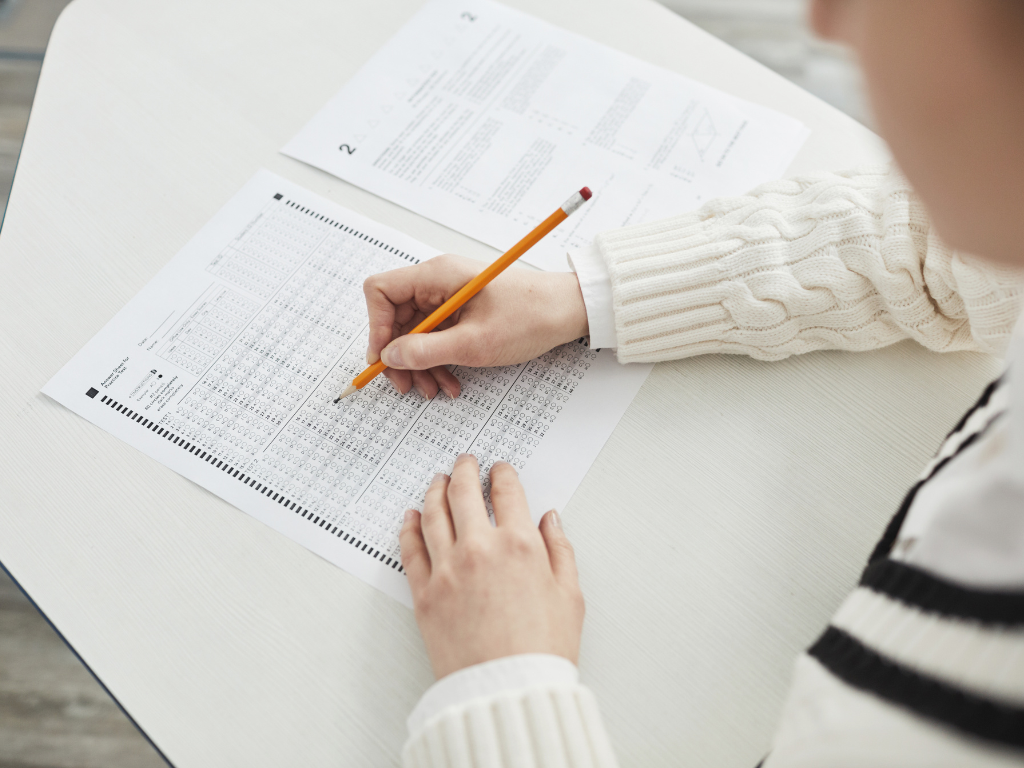Empowering Students to Tackle Test Anxiety

Reducing Test Anxiety: Strategies for Success
By Diane Myers, PhD, SVP, Special Education – Behavior at SESI
Brittany Croteau, MSW, LCSW-C, Director of Behavior Support at SESI
Ask any educator about the most challenging time of year, and they’re likely to mention state or district testing. While these assessments are essential for measuring progress, testing season often brings heightened stress for both students and staff. Many students, in particular, experience test-related anxiety, making an already stressful event even more challenging.
Building Students’ Self-Confidence
High self-confidence can reduce the likelihood of test anxiety. Here are ways educators can help students build confidence:
- Integrating social-emotional supports into daily instruction: Teach students emotional regulation, coping skills, and how to identify their strengths. For example:
- Emotional regulation: Use tools like mood meters to help students identify and manage their emotions.
- Identifying strengths: Have students list personal strengths and share affirmations with their classmates.
- Coping skills: Discuss strategies for managing challenging experiences and applying these strategies to various situations.
- Maintaining a positive attitude: Encourage students to focus on things that bring them happiness and how to access these feelings during challenges.
- Community building: Create a classroom culture where students feel supported and part of a larger group.
- Remind students about accommodations: For students with disabilities, highlight available accommodations like extra time or scheduled breaks to foster a sense of empowerment.
- Teach healthy habits: Encourage good nutrition, sleep, and exercise to help students feel their best.
Building Fluency with Test-Taking Skills
Familiarity with test-taking reduces anxiety. Strategies for building test-taking fluency include:
- Building behavioral momentum: Start with short practice tests and gradually increase their duration to match actual test lengths.
- Role play test day: Conduct mock tests where students practice routines and behaviors for the big day.
- Make test preparation fun: Use games like Jeopardy or Kahoot! to review material and encourage collaboration.
Integrating Test Preparation into Daily Routines
Making test preparation a regular part of school routines helps reduce anxiety. Ideas include:
- Incorporating expectations into behavior matrices: Define behaviors like sitting quietly and being prepared as part of schoolwide expectations.
- Offering incentives: Create special rewards for meeting test-taking expectations, like raffles or class-wide celebrations.
- Using behavior-specific praise: Acknowledge students with specific feedback, such as, “Great job arriving early and sitting down quietly!”
- Modeling desired behaviors: Staff can demonstrate calm and supportive behavior to set a positive tone for students.

While tests may never be a favorite activity, creating a supportive environment can reduce stress and foster success. For students with more severe anxiety, working with a counselor or social worker can provide additional support. Learning to cope with challenges during school prepares students for high-stakes situations in the future, such as college exams or job certifications.


